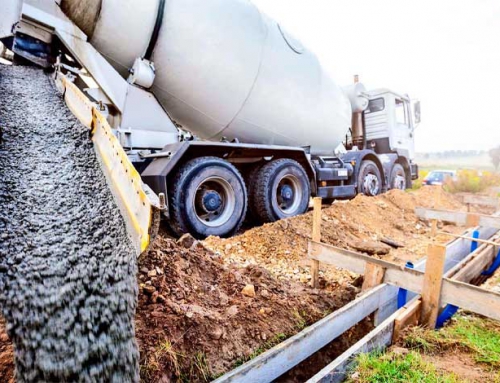What are additives to concrete? Types and uses of concrete additives
The purpose of concrete additives is to improve the behavior of concrete under various conditions. Additives lower construction costs, alter the properties of hardened concrete and maintain the quality of concrete throughout mixing, transport, pouring, and processing. These substances are sold in ready-to-use form and applied to concrete either in the plant or on-site. Stay with us to discover more about additives for concrete.

What are additives to concrete?
Concrete Admixtures are substances used to modify the characteristics of concrete. In addition to cement, water, and aggregate, other ingredients are added to concrete before or after mixing. Additives can be used to lower construction costs and ensure certain qualities of newly poured concrete.
Additives can be employed as an emergency measure to resolve implementation challenges if project managers encounter difficulties during the construction phase. The proportion of admixture used in concrete varies depending on the additive and cement concentration. In general, admixtures comprise a relatively minor portion of the concrete mixture. Typically, less than five percent is used
The importance of using concrete admixtures
Other than cement, aggregates (sand), and water, any substance added to concrete is considered an admixture. Even though these materials aren’t always required, concrete additives serve as auxiliary forces under certain conditions.
Various admixtures are used to modify the properties of concrete. Common applications include enhancing workability, extending or shortening the curing period, and strengthening concrete. Admixtures may also be utilized for aesthetic purposes, such as to alter the color of cement.
It is possible to increase the effectiveness and resistance of concrete in natural conditions by utilizing engineering science, modifying concrete ingredients, and examining the type of aggregates and the water-to-cement ratio. If it is impossible or special circumstances, such as frost, high temperature, increased abrasion, or prolonged exposure to deicing salts or other chemicals, admixtures are added to concrete.
Benefits of concrete additives
The benefits of using concrete admixtures include:
- Admixtures reduce the amount of cement required, making concrete more cost-effective.
- Admixtures make concrete more workable.
- Certain admixtures improve the initial strength of concrete.
- Compared to normal concrete, some admixtures reduce the initial strength but increase the final strength.
- Admixtures lower the initial heat of hydration and prevent thermal cracking in concrete.
- These materials improve the resistance of concrete to the freezing effect.
- By utilizing waste materials, concrete mixes maintain maximum stability.
- Concrete setting time can be reduced by using these materials.
- Some enzymes in the Admixtures have antibacterial properties.

Application of concrete admixtures
Furthermore, some of the primary functions of using concrete admixtures are:
- It can reduce the water required to achieve the desired slump by 5-10%.
- It retards the setting rate of concrete while keeping it usable.
- It retards the effects of warm weather.
- It accelerates the development of precocious resistance.
- It reduces the high-early-strength of cement.
- It reduces the processing time required.
- It can cut water consumption by 12-30% while producing a smooth, workable concrete form.
- It is used to slow down the corrosion of reinforcing steel in concrete.
- It helps to improve the curing of concrete.
- It helps to reduce concrete shrinkage.
- It reduces alkali-silica reaction.
- It is used to improve pumping capacity.
- Improves concrete-to-rebar bonding.
- Strengthens the bond between the existing and new concrete.
- Increases impact and abrasion resistance.
- It creates colored mortar or concrete.
Typically, admixtures are made by mixing the powder with liquid. Some admixtures, such as pigments, pumping aids, and expanding agents, are manually added to the concrete mixture since they are required in small amounts.
Types of concrete admixtures
Admixtures are added with a cement and water mixture to aid in the setting and hardening of concrete. These admixtures are available in both liquid and powder forms. Chemical and mineral compounds are the two categories of admixtures. The nature of the project determines the use of admixtures.

Chemical Admixtures
- Chemicals are used to accomplish the following:
- It lowers the project’s cost.
- It overcomes emergency concreting conditions.
- It ensures quality throughout the entire process, from mixing to implementation.
- Repairs hardened concrete.
Mineral admixtures
Minerals serve the following functions:
- Increases the concrete’s strength.
- From a financial perspective, reducing the quantity of materials for concrete mix is possible.
- It decreases the level of permeability.
- Modifies the characteristics of hardened concrete through hydraulic action.
The classification of concrete admixtures is based on their function:
-
Water consumption reduction: These materials lower the amount of water required to be added to concrete for a particular project. These admixtures are utilized in large-scale construction projects.
-
Accelerator: These compounds accelerate the cement hydration process, which is especially important during the colder months when concrete is being poured. Calcium chloride is added to unreinforced concrete as an accelerator.
-
Aeration: By introducing microscopic air bubbles, these admixtures help to stabilize the concrete. These materials keep concrete from cracking in cold weather.
-
Shrinkage reduction: Concrete admixtures are utilized in slabs, bridge decks, and structures susceptible to cracking and shrinkage.
-
Corrosion inhibition: These admixtures are used in cases with chloride salt as a pollutant. Rebars can be corroded and rusted by chloride ions. Bridges, parking garages, and maritime buildings are the areas that require this chemical the most.
Classification of the main types of concrete admixtures

The main types of concrete admixtures are as follows:
Foamed concrete admixtures
The foamed concrete admixtures are used to trap microscopic air bubbles in concrete. These materials enhance the durability of concrete by increasing its resistance to freezing-thawing damage. When working with concrete, foamed agents enhance performance and increase resistance to water infiltration.
It also takes less water per cubic yard than concrete without foaming admixtures, improving the water ratio to cement. Polyethylene oxide polymers, certain fats and oils, sulfonated chemicals, and detergents are applied as foaming agents
Water reducing admixtures
Water-reducing admixtures lessen the quantity of water used to create concrete with a particular consistency. It is also feasible to improve the concrete slump without adding water, reducing the water-to-cement ratio.
By decreasing the amount of water in cement, water-reducing admixtures can increase the concrete’s strength while preserving its performance. Commonly utilized as water-reducing admixtures are lignin sulfonic acids and metal salts.
Plasticizers
Superplasticizers are organic compounds that turn concrete into a more fluid mixture. They work by coating the cement particles and causing them to separate from the clumps that usually result from mixing cement and water.
Lubricating additives give each cement particle a negative charge, which makes them repel each other and have a more accurate distribution. Admixtures are utilized either to facilitate concrete placement or to reduce the amount of water in the concrete mixture to increase its strength.
Concrete setting accelerator
Setting accelerators speed up the setting of concrete. Additionally, they facilitate the development of concrete strength. Utilizing type 3 Portland cement and setting accelerators can enhance the development of concrete’s strength.
Curing concrete at higher temperatures or decreasing the water-to-cement ratio can accelerate the setting time of concrete. Accelerators are frequently used to increase the initial strength of concrete in cold weather to account for potential frost damage.
Set retarder
Set retarding admixtures are essentially the antithesis of setting accelerators. They extend the time required to cure concrete; in other words, they shorten the time required for cement paste to set. In hot conditions, retarding admixtures are commonly utilized. Typically, retarding admixtures are utilized during warm weather.
By adding retarding admixtures to concrete, less water is required for curing. With retarding admixtures present, achieving the ideal water-cement ratio and boosting the ultimate strength is feasible.
Other concrete admixtures include:
- Fly ash
- Silica fume
- Blast furnace slag
- Pozzolan
- Corrosion inhibitors
- Bonding additives
- Hardeners
- Color additives
- Gas generators
Conclusion
Currently, new admixtures are being tested. Reducing the demand for Portland cement has a positive impact on the environment and can help reduce pollution. To make concrete self-healing, various admixtures are currently undergoing testing. Future construction of buildings, roads, and other structures will likely increase their use of concrete admixtures.










Leave A Comment